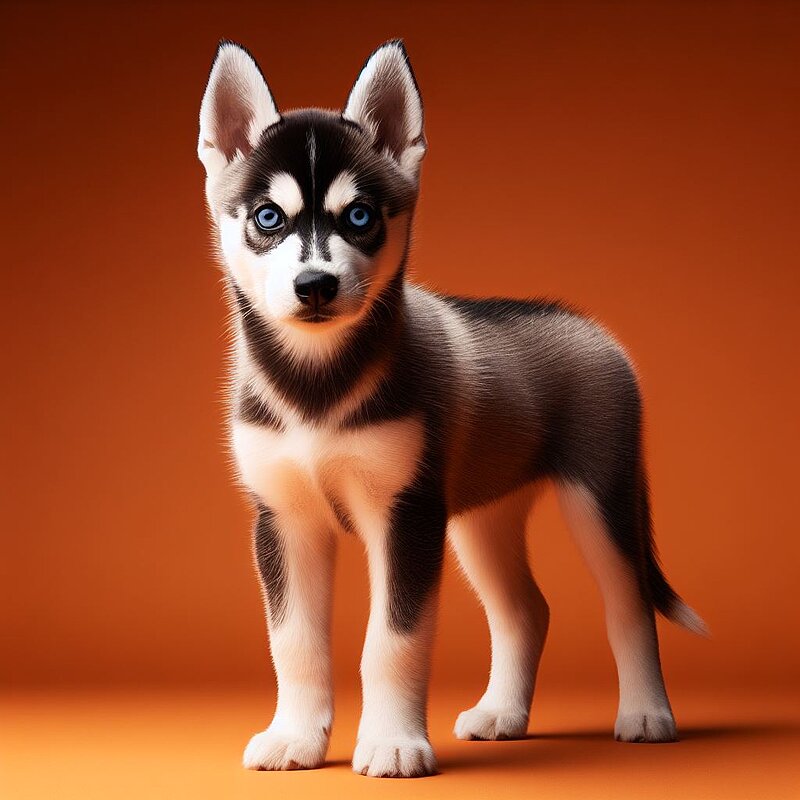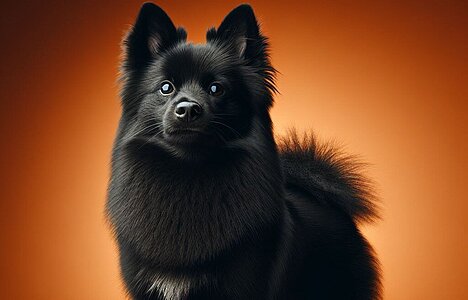Alaskan Klee Kai: A little husky with a big heart
History of the Alaskan Klee Kai
The origin of the Alaskan Klee Kai can be traced back to Linda Spurlin, who began developing the breed in Wasilla, Alaska, in the 1970s. Her goal was to breed a dog that had the beauty and temperament of the Alaskan Husky, but in a more compact size. Through careful breeding programs that included Alaskan Huskies, Siberian Huskies, American Eskimo Dogs and Schipperkes, she created a breed known today as the Alaskan Klee Kai. The name "Klee Kai" comes from an Eskimo language and means "little dog".
Who is the Alaskan Klee Kai suitable for?
The Alaskan Klee Kai is ideal for active people and families who spend a lot of time outdoors. These dogs are extremely agile and love to run and play. Due to their intelligence and curiosity, they need mental and physical challenges. If you live in the city but lead an active lifestyle and have plenty of time for walks and activities, the Alaskan Klee Kai could also be a good fit for you. They are less suitable for people who have little time or prefer a quieter lifestyle.
Character and temperament
Alaskan Klee Kais are known for their intelligence, playfulness and loyalty. They are very alert and can be reserved with strangers at first, but develop a close bond with their family. These dogs are often energetic and need plenty of exercise and mental stimulation. They are also known for their ability to learn tricks quickly and love to participate in activities such as agility or obedience training.
Appearance of the Alaskan Klee Kai
The Alaskan Klee Kai closely resembles the Alaskan Husky, but is much smaller. It has a dense, double-layered coat that comes in different colors such as black and white, grey and white and red and white. The distinctive facial markings, often referred to as a "mask", are another characteristic feature of this breed. Their eyes can be blue, brown or even bicolored. The Klee Kai has an upright posture and a bushy tail that curls over its back.
Grooming the Alaskan Klee Kai
The dense coat of the Alaskan Klee Kai requires regular grooming to prevent matting and keep the skin healthy. Weekly brushing is usually sufficient, but more frequent brushing is recommended during the spring and fall shedding seasons. These dogs are relatively clean and only need an occasional bath. In addition, teeth should be brushed and nails trimmed regularly. Ears should also be checked and cleaned regularly to prevent infections.
Health of the Alaskan Klee Kai
The Alaskan Klee Kai is generally a healthy breed, but like all dogs can be prone to certain genetic conditions. These include patellar luxation, heart problems and liver disease. Responsible breeders test their dogs for these health problems to ensure they produce healthy puppies. Regular vet visits and a balanced diet are important to ensure the health of your Alaskan Klee Kai.
Size and weight
Alaskan Klee Kais come in three size categories: Toy, Miniature and Standard. Toys are up to 33 cm tall and weigh up to 4.5 kg. Miniatures are 33-38 cm tall and weigh 4.5-7 kg. Standards are 38-43 cm tall and weigh 7-10 kg.
Exercise requirements and suitability for the city
Alaskan Klee Kais have a high need for exercise and love to be active. They need sufficient daily exercise to stay healthy and happy. A long walk, playtime in the park or activities such as jogging and hiking are ideal. Despite their high energy levels, they can also live in the city as long as they get enough exercise and mental stimulation.
Training recommendations
Alaskan Klee Kais are intelligent dogs that learn quickly, but can also have a strong will. Consistent, positive reinforcement is the best approach to training. They respond well to treats, praise and toys as rewards. Early socialization and obedience training are important to ensure they get along well with other people and animals.
Behavioral characteristics and interactions with children and other animals
Alaskan Clover Kais are generally friendly and playful, but can be initially reserved with strangers. They get along well with children, especially if they grow up with them. Due to their hunting instinct, care should be taken when they are around smaller animals, especially rodents and birds. Early socialization helps to make these interactions positive.
Recognition by the FCI
The Alaskan Klee Kai is not currently recognized by the Fédération Cynologique Internationale (FCI). However, the breed is recognized by other organizations such as the American Rare Breed Association (ARBA) and the United Kennel Club (UKC).
Information
Alternative Names
Appearance
Height at withers
Weight
Life expectancy
Breeding
FCI-Group
More pictures
Similar to Alaskan Klee Kai
These dog breeds look similar to the Alaskan Klee Kai or resemble it in character.




